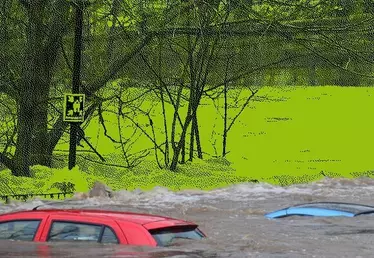

Hero banner custom title
One of the world’s leading universities intensifies its climate change focus
3 min
Stanford University, located on the edges of California’s famed Silicon Valley, is where some of today’s most innovative minds have been formed. Based on a major donation it has received, Stanford will be particularly focused henceforth on climate change, producing a variety of sustainable solutions for sectors ranging from water management to food, urban sustainability, healthcare energy and green technology in general.
Stanford University, located on the edges of California’s famed Silicon Valley, is where some of today’s most innovative minds have been formed. Based on a major donation it has received, Stanford will be particularly focused henceforth on climate change, producing a variety of sustainable solutions for sectors ranging from water management to food, urban sustainability, healthcare energy and green technology in general.
In a recent New York Times article, the opinion that “climate and sustainability are destined to become the new computer science” is expressed by one John Doerr, an American engineer and ecology-minded venture capitalist who, together with his wife Ann Doerr, has recently donated $ 1.1 billion to Stanford University, one of the world’s most prestigious institutions. This donation, along other contributions, will materialise in the September 2022 opening of the Stanford Doerr School of Sustainability, a faculty that will be entirely focused on climate-related issues. As announced by Chancellor Marc Tessier-Lavigne, “These donations will help Stanford to do everything possible to solve the most complex climate and sustainability problems, while training the next generation of students to be willing and committed to meeting these very same challenges”.
“Meeting the greatest challenge that humanity has ever faced”
This brand new school, the first that Stanford has opened in 70 years, will cover eight eco-disciplines including Earth and planetary sciences, climate change, energy technology, water management, food and urban sustainability, while promoting the deployment of political and technological solutions. According to Arun Majumdar, a professor of mechanical engineering and future Dean, the institution will also partner with “outside bodies from all around the world to co-develop innovative solutions and identify new ideas through research and teaching”.
Stanford is not the only American university taking action on climate change, with other great names such as Columbia, Harvard and Berkeley also making environmental research a priority. But few if any of the others will receive as much funding as Stanford to focus on environmental issues. It is the biggest donation in the university’s long history, with the Doerr couple praising “Stanford [for] making a bold, achievable and enduring commitment to address humanity's greatest challenge” and affirming their confidence in its “ambition and capabilities”. Having said that, some feel that this enormous donation does not necessarily make sense. For instance, David Callahan - author of “The Givers Wealth, Power, and Philanthropy in a New Gilded Age” - has told the New York Times that he did not understand how giving so much money to such a rich university could move things forward in the short term.
“These billion dollars could be better spent trying to shift public opinion. Until the public sees this as a priority issue, politicians are not going to act”.
A donation to encourage other philanthropists
It remains that John Doerr and his wife have signed Warren Buffett and Bill Gates’ “Giving Pledge” campaign encouraging society’s wealthiest to give away most of their money for philanthropic purposes. John Doerr is said to have committed to fighting climate change after watching Al Gore’s 2006 film, “An inconvenient truth”. Since then, he has invested in sustainable technologies and written “Speed & Scale: An Action Plan for Solving Our Climate Crisis Now”, a book where he proposes concrete solutions to meet the challenges of climate change. The investor and engineer now sees the need to have higher education focus on sustainable development in much the same way as it runs medical schools. He hopes that this large donation to Stanford will encourage others to invest their money in environmental protection as well.











